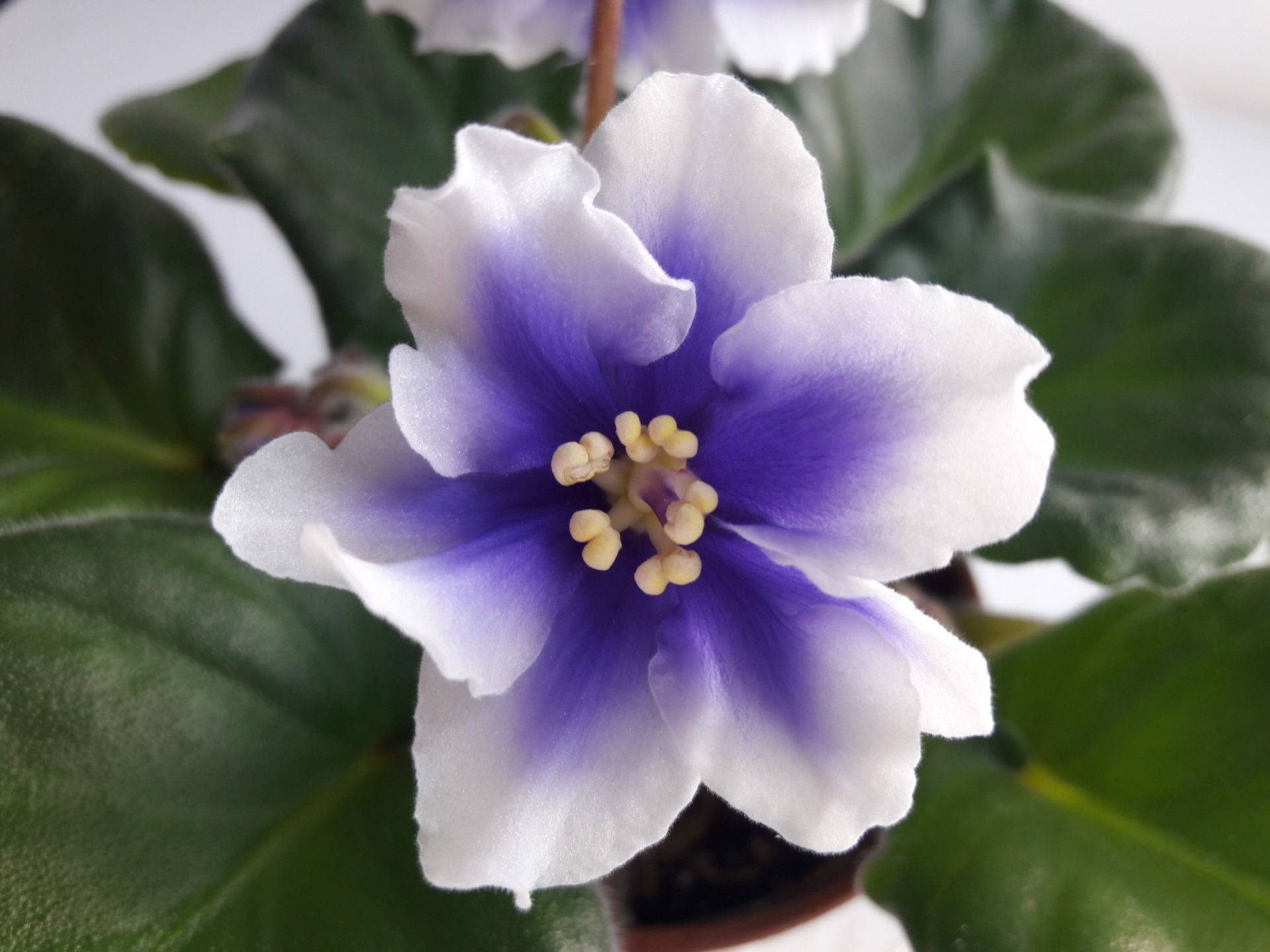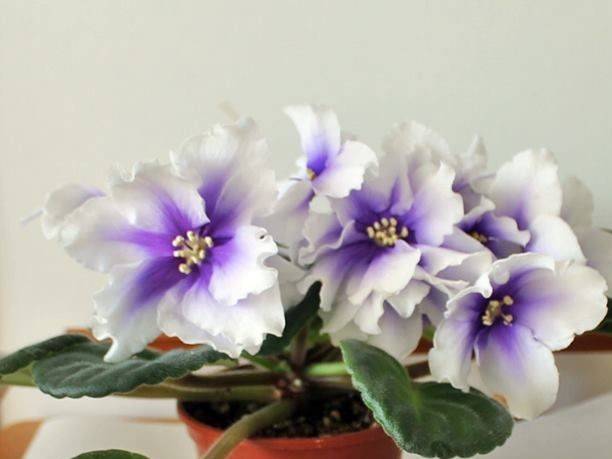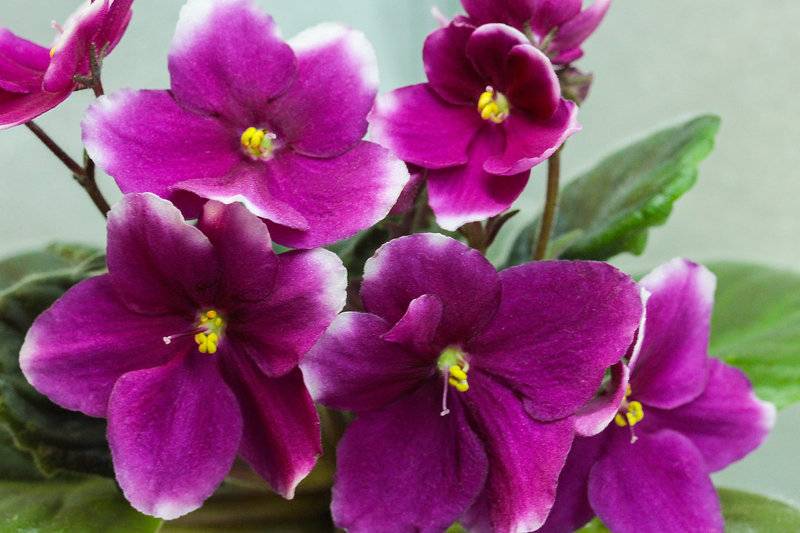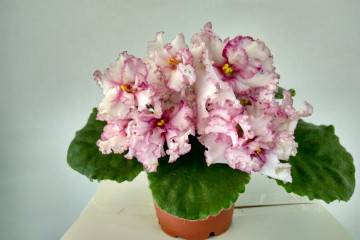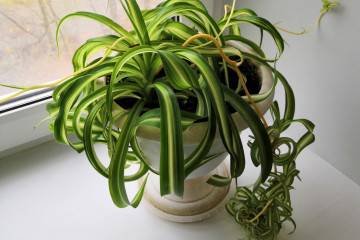Home flower violet Humako inches
Content:
The passion for home floriculture often starts with violets. In home greenhouses, 20 plant species are grown, more than 100 varieties. One of the most beautiful representatives of the genus is the violet Humako inc.
What does the violet Humako inches look like?
The humble commandant of the Usambator District of Tanzania immortalized his name when, in 1892, he discovered a blue-purple flower in a crevasse in a rock. V. von Saint-Paul collected seeds, from which G. Weldland, a botanist and florist, grew an indoor flower a year later. In the description, he gave him the name Saintpaulia violet, or violet-flowered, and singled out it as a separate genus.
Flowers belong to the Gesneriev family. In nature, the plant reaches a height of 30 cm. At home, the Humako violet is inches smaller.
Leaves are light green, fleecy. The shape is rounded, sometimes oval, slightly pointed at the ends. Flowers are collected in a root rosette measuring 7-10 cm. A large rosette is made more compact when the petioles are not allowed to grow in length, they are cut off.
The flowers are large (up to 8 cm) white with a blue center. They consist of five elements, the inflorescences are collected in a brush. In double and semi-double varieties, the number of petals increases. Lush flowering, flowers completely cover the rosette.
They can be wavy at the edges. It is a separate variety that is difficult to grow commercially as it cannot tolerate transportation. Therefore, it grows only among collectors. They call the twin variety Humako inches 2.
Features of the care of the violet Humako inches
Nursing culture is not demanding. There are some content rules to follow.
Seat selection
In the wild, the flower grows in crevices of rocks, at the bottom of gorges, near waterfalls, that is, in shaded and wet areas. In a home greenhouse, choose a bright place, but without direct sunlight. Ultraviolet light destroys the rosette, leaves and flowers that rot. At noon, the pot is shaded.
Cut off dried elements, injured leaves. They do this with care so as not to hurt the peduncles.
Violet requires 12 hours of diffused light. When daytime hours are short, provide artificial lighting with fluorescent lamps.
Temperature and humidity
The flower grows well, blooms for a long time at a temperature of 20-24 ° C. In winter, the temperature should be 10 ° C. At lower thermometer readings, the flower dies. If the temperature is too high, it will not bloom.
Culture does not tolerate through winds. When supercooled, the roots rot.
Air humidity should be 50%. If it is lower, the container is placed on a pallet with wet expanded clay, the air around is sprayed.
Watering and spraying
Watered at the root. The soil in the dishes is kept wet, but not with stagnant moisture.
Watering methods:
- immerse the container in water;
- watered through a pallet;
- with a wick. It is placed in a bowl of water, and above it is a flower pot;
- moisten through a syringe.
To prevent mold from appearing in the flowerpot, phytosporin is spilled once a month. In winter, watering is reduced.
Priming
Soil requirements:
- breathability.For this, baking powder is added;
- moisture capacity;
- acidity pH 5.5-6.5.
The primer must contain phosphorus and potassium. Potting mixes in flower shops may have an oversupply of them. They also contain parasites. Therefore, the mixtures are prepared independently from peat, moss, perlite, charcoal.
Before use, disinfect by calcining in the oven.
Top dressing
The flowering of the violet Humako inches pink depends on the fertilizing:
- complex mineral fertilizers. They are sold in liquid form in the shops of the agricultural complex with the inscription: "For Saintpaulias", "For violets". Diluted according to the instructions, watered at the root;
- banana peel. An infusion is made from one peel, filled with 1 liter of water. After several days, watered in a warm place, having previously moistened the soil;
- sweet water. Sugar (1 teaspoon) is stirred in 1 liter of water. Watered once a month.
When the culture blooms, fertilize 2 times a month. In winter, feeding is reduced.
Bloom
Violet blooms with a hat 8 months a year. With good care, this process is friendly, faded flower stalks are constantly replaced by new ones.
The peculiarity of the variety is that in hot weather the white part of the flower increases to the detriment of the blue one. In winter, the opposite picture is observed.
Humako's violet flame also blooms. Only its flowers in the middle are bright purple.
Reproduction of violets Humako inches
The plant is propagated by leaf cuttings. A healthy mature leaf blade is cut off at an angle from the mother bush. Select the bottom sheets. The cut is disinfected with activated carbon, placed in boiled water. The dishes are selected in a dark color. The water is changed periodically.
By the end of the second month, roots appear. The leaf is transferred to a shallow pot with drainage and nutrient soil.
You can root the leaf in wet sphagnum moss or directly in the ground.
The flower is also propagated by rosettes, which are separated from the mother bush during transplantation. They are planted immediately in a separate container.
Transfer
Transplant of violets Humako happens:
- planned, when the soil in the pot is depleted, it is changed to a new one. Do it every 2 years. The pot is selected the same size. If the plant is healthy, the procedure is carried out by transshipment with an earthen clod. You first need to do drainage at the bottom of the pot. It should occupy half of the flowerpot;
- unscheduled when the plant is sick. Then they shake off the old earth, examine the roots. Blackened, rotten ones are removed. Pour in new soil from the store, or prepare the soil mixture yourself.
The flower does not suffer during transshipment. Carry out a planned spring, unscheduled as needed. Before transshipment, the plant is abundantly moistened.
Diseases and pests
Violets are annoyed by those pests and ailments that live in home flower beds:
- spider mite. Fight with insecticides;
- black leg - waterlogging of the soil. The substrate is changed;
- late blight - high humidity of soil and air. For prevention, superphosphate is introduced;
- thrips. The plant is saved from them by removing flowers and buds.
The violet variety Humako Inches is cultivated by almost all growers. This is a beautiful ornamental plant. Easy care: watered at the root, fed with complex mineral fertilizers, transplanted by transfer, propagated by leaf cuttings. If done correctly, it will bloom for 8 months.
